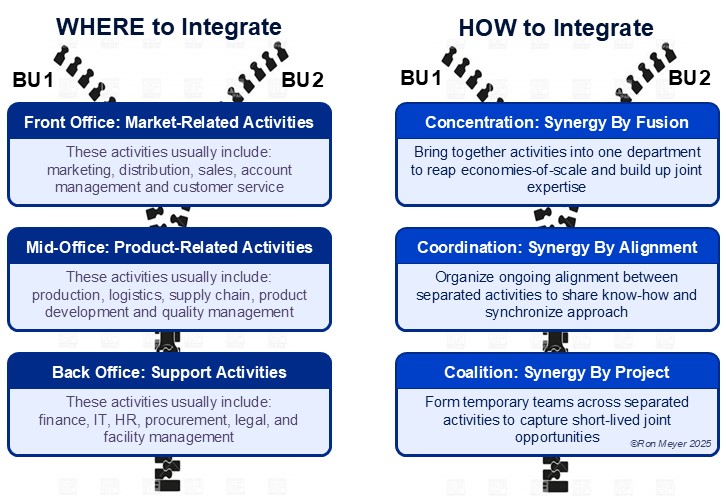A business unit is a part of an organization that can potentially be run independently, as a separate business. It generally needs to perform front-office activities that are market-facing (such as marketing and sales), mid-office activities that are product-related (such as production and logistics) and back-office activities that are support-oriented (such as HR and finance).
Leaving business units largely independent allows them to be responsive to their specific market demands. But they can also be partially integrated to realize synergies, such as scale economies and market power (see model 64, Corporate Synergy Typology). Therefore, balancing the level of integration is called the paradox of responsiveness and synergy.
The Integration Zippers is a model for thinking about various organizational possibilities between the extremes of total separation and full integration of business units. Using the metaphor of a zipper, the model suggests that business units should be integrated starting from “the bottom” up, at each point considering whether further zipping make strategic sense. The left-hand zipper deals with which activities to integrate, proposing that back-office, then mid-office and finally front-office is the preferable order. The right-hand zipper deals with the manner of integration, advising to first consider only using projects, then to weigh whether ongoing alignment would be better, and then ultimately to even contemplate using full fusion.

The two Integration Zippers consist of the following elements: